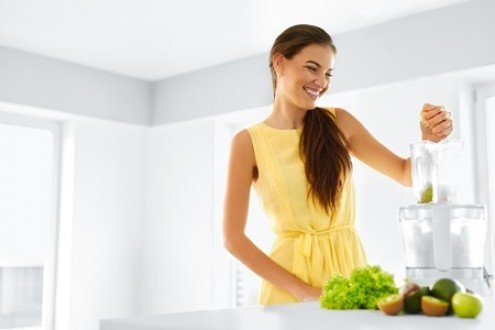Dr. Michael Hall has expert advice on getting the most out of juicing for optimum health benefit.
To get the most out of grab-and-go juices, know what the labels mean.
- "Contains 100% juice" means it is made from fruit and vegetable juices. It does not guarantee that your carrot juice is 100% carrot juice. It may contain other juices for filler and flavor.
- "HPP" means high pressure processing. The juice has been pasteurized without heat to give it a longer shelf life, deactivating certain microorganisms and enzymes.
- "Raw" is cold pressed. It is not pasteurized. It lasts two to three days if not treated by HPP. HPP gives it a shelf life of about 45 days. Check the label.
- "Unpasteurized" means it is made from fresh ingredients and has a shelf life of two to three days. It's a little more expensive because it requires fresh ingredients and has a short shelf life.
- "Pasteurized" means the juice has been heated to prevent spoiling and to kill harmful pathogens.
- "Cold-pressed" juice is made by pushing the produce through a press. Since it isn't heated, it keeps the enzymes of the raw fruits and vegetables intact. This is what you'll find in juice bars.
- "From concentrate" means water must be added to get the correct consistency.
- "Not from concentrate" means no water was removed.
- Don't expect to go to a diet of liquids only. Juicing is most successful when you incorporate it into your diet instead of using it as a meal replacement.
- Subtract some other foods when you add juices. The idea is not to add calories to your diet. If you add a juice to a meal, remove something from your plate for that meal.
- Be smart with your produce selections. You're not making a milkshake or smoothie. Dr. Hall suggests using 80% vegetables, 20% fruits. The fruit is used to cut the bitterness of the vegetables, not to make it into a dessert.
- Drink your juice as soon as possible. Don't make too much. When it's exposed to oxygen, it starts to break down and the health benefits decrease.

 Dr. Michael Hall is a Miami Beach, Florida general medical practitioner specializing in longevity, anti-aging, total body wellness and rejuvenation. With over twenty years of experience in medicine; Dr. Hall is a credible resource offering his expertise on a wide array of popular health topics such as: brain function, organ function, joint and muscle pain, stem cell therapy, tissue repair, testosterone replacement therapy, sexual health, hormonal imbalance, travel illnesses, travel vaccinations, substance abuse treatment, weight loss, skin care and skin rejuvenation.
Dr. Michael Hall is a Miami Beach, Florida general medical practitioner specializing in longevity, anti-aging, total body wellness and rejuvenation. With over twenty years of experience in medicine; Dr. Hall is a credible resource offering his expertise on a wide array of popular health topics such as: brain function, organ function, joint and muscle pain, stem cell therapy, tissue repair, testosterone replacement therapy, sexual health, hormonal imbalance, travel illnesses, travel vaccinations, substance abuse treatment, weight loss, skin care and skin rejuvenation.